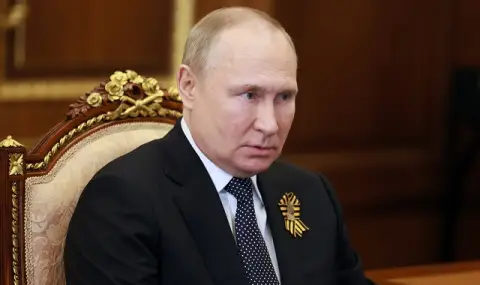From Biden to Putin and from Xi to Netanyahu: more and more often state leaders draw "red lines", to show their opponents what lines they should not cross. But do they make sense?
In March 2024, US President Joe Biden warned Israeli Prime Minister Netanyahu against a ground offensive in Rafah. “There cannot be another 30,000 victims on the part of the Palestinians. This is a red line," Biden said in a television interview.
In February, EU Foreign Minister Josep Borrell threatened China: if Beijing were to supply weapons for Russia's war of aggression against Ukraine, it would be crossing a red line for the EU. Similarly, immediately before the start of the war, Putin outlined Ukraine's possible NATO membership. And for Chinese state leader Xi Jinping, the limit of tolerance is obviously connected with the formal declaration of independence from Taiwan.
At the time - in 2012 - Benjamin Netanyahu drew a red line in the nuclear dispute with Iran. Then he told the UN General Assembly that Tehran was on the way to acquiring an atomic bomb and backed up his words with a graphic showing the threshold that should not be crossed.
A wake-up call for the existing world order
Indeed, the drawing of red lines in international politics has increased a lot in recent years. According to data from the American website Smart Politics, before Barack Obama, only two US presidents mentioned the lines, and he - as many as 11 times. The most famous is his warning to the Syrian dictator Bashar Assad - not to use poison gas in the Syrian civil war.
Conflict researcher Anne Holper from the University of “Viadrina" in Frankfurt on the Oder tells DV that the increase in red lines is primarily an expression of the fact that the geopolitical balance of power is increasingly shifting. According to Holper, the hegemonic forces mainly signal the following: “Here for us is the border that should not be crossed in order to preserve the order we have established".
The use of poison gas in Syria, the possible presence of an atomic bomb in the hands of Tehran or the Russian invasion of Ukraine - all these are violations of taboos that shake the foundations of the world order. “When an order that considers itself stable feels challenged, red lines are drawn - there is a need to mark how far the threat can go, beyond which the enemy should not allow himself to pass," explains Holper.< /p>
Intimidation bluff with side effects
This includes the threat of severe consequences, which, however, are rarely concrete. "Actually, the goal is always deterrence," Holper told DV. In principle, it is a political bluff, which leads to a dilemma: “Actually, there are no intentions to impose heavy sanctions, but they must be imposed if the border is crossed".
And Joe Biden left open the question of what the US response would be to the Israeli ground offensive in Rafah - only a threat of “reduction in military aid" for Israel. Shortly thereafter, Washington backtracked on the rhetoric, apparently to avoid zugswang: "The United States does not believe that Israel's actions in Rafah constitute a 'major ground operation' that crosses President Joe Biden's red line," it said. from the White House.
Therefore, for Anne Holper, drawing red lines is a paradoxical tool: “There is no desire to go too far, but the counterparty forces you by crossing the line". However, the consequences are small or even non-existent: “Then there is a loss of trust or power, which can be much greater than the actual transgression". An unfulfilled threat is perceived as an expression of weakness.
The fight against the crossing of borders
However, why are red lines constantly drawn in such a case? Because the distribution of forces in the world is fundamentally changing, which is why in situations of escalation there are no other means that can be unequivocally accepted by all participants? The ambitions of Russia, China and some countries of the Global South are the reason that the previous world order will be replaced by a new one, says Holper. Above all, the forces that want to preserve the status quo want to prevent a “break through the borders", as it is known that if one does it, many others will follow.
At the same time, however, the shift in power leads to the fact that borders can no longer be respected constantly and everywhere. In addition, they show how far one can go in breaking taboos, and also what countermeasures are ready for, or rather will not be taken.
Therefore, from the point of view of conflict studies, it is not wise to publicize red lines to be used as an intimidation mechanism. “Because, as a rule, it is impossible to formulate the threat in such a way that it is subsequently excluded without the desire to end up in a zugzwang," explains Holper.
Red lines are better directed inwards
The researcher believes that red lines are not necessary to define a clear border and to clearly indicate our rules that we defend. “The exact wording of these rules and limits, so that they are respected, depends on the levers with which they can be imposed". It makes much more sense for red lines to be used in internal communication - for example between allied forces or armies, but not spread outwards.
External communication, in turn, should be as smooth as possible to prevent escalation. For example, when it comes to the war in Ukraine, everyone knows that a border crossing by Russia would not be tolerated, Holper points out. “It would be better if all allies in NATO and the EU act together and speak with one voice, so that it is clear that they are united and no one could split them - so it will be seen that they stand for their values together ."
